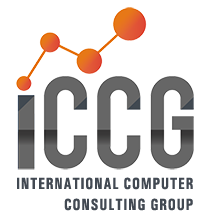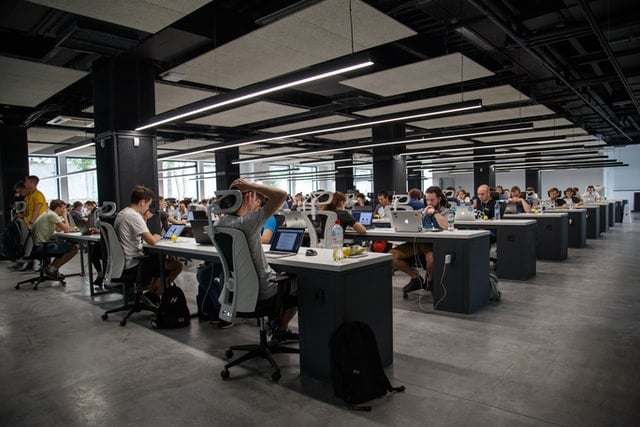A point of sale system is not always given much thought on a day to day basis by decision-makers in multi-location organizations. But a POS solution is a pivotal element to business operations and strategy, even if it’s not glamorous. Transactional data collected via your point of sale is the fuel your business needs to grow. With a legacy solution in place, your business is bound to lose important ground as the demands of the industry evolve.
So, let’s break it down.
What are some of the ways that your point of sale should serve your business today, perhaps in ways that weren’t in place even a few years ago? How should your current POS continue to support your business strategy and goals and help you keep pace with and exceed those of your competitors?
Read More
Topics: ERP, Food & Beverage, Distribution, Supply Chain, Food Technology, CloudSuite Food & Beverage, Enterprise Software
Supply chain disruptions caused by black swan events are by nature unforeseeable events that can be utterly catastrophic. Due to their destructive potential, these unfortunate events justifiably draw attention to how critical supply chains are to sustaining business success and essential daily functions. Unfortunately, they also draw attention to how vulnerable supply chains tend to be when faced with sudden adversity.
Studying the kinds of companies that can weather such catastrophes provides many key lessons about how enterprises can implement resiliency solutions and strategies to respond to, and mitigate, the deleterious effects of a black swan event.
There are four key steps enterprises can adopt to ensure that they are able to respond and react with the flexibility needed to minimize the impacts of black swan events and the “ripple” of disruption occurring at numerous levels of magnitude.
Read More
Topics: Manufacturing, Distribution, Supply Chain, Warehouse Management Systems, Enterprise Software, WMS, Supply Chain Management
Infor prioritizes the safety of its customers and their employees. The Infor Workforce Management (WFM) team believes the strength of an organization is its people, and to keep businesses healthy depends on keeping employees healthy and safe. We are here to help, with information about relevant features and functionality that can help your organization respond to COVID-19 and evolve in the new normal.
Contact Tracing
Infor WFM includes configurable Work Detail Filters on both the Daily Timesheet and Supervisor Approval Worksheet. When an employee is identified as exposed to the COVID-19 virus, enabling these filters can help quickly find other employees who worked on the same team or the same department at the same time as that person.
Paid Sick
You can track COVID-19-related paid sick time separately from your existing sick policies. Define a special COVID paid sick time balance and track its usage on employee timesheets by defining a unique time code.
Read More
Topics: ERP, Distribution, Supply Chain, Enterprise Asset Management, Enterprise Software, Birst, Security & Compliance
Dedicated to safeguarding your information
To protect the privacy of its customers and the safety of their information, Infor® maintains high standards of data security. Infor Birst® relies upon state-of-the-art and secure data centers, enforces strict internal product controls, and regularly audits its policies and procedures using third-party auditors.
The following sections of this white paper cover the key areas of Birst security in detail, including physical security, system security, operational security, reliability, and application and data security.
The key tenets of Infor Birst’s security initiatives are:
• Security is designed from the ground up in the application, network, hardware, and operational procedures.
• Birst is SOC 2 Type 2 audited, HIPAA/HITECH attested, and ISO-27001:2013 certified.
• Modern Tier-4 data centers that are SOC 2 Type 2 audited and are ISO 27001 certified or follow ISO 27001 policies.
• Infor’s global GDPR privacy program is independently validated by TRUSTe.
• Adherence to security best practices for code development, testing, and operations is followed.
• Regular external review of the policies and procedures for Birst security and operations is conducted.
• Regular penetration and vulnerability testing by third parties is completed.
• Birst personnel maintain security and privacy certifications.
Read More
Topics: ERP, Distribution, Supply Chain, Enterprise Asset Management, Enterprise Software, Birst, Security & Compliance
The average lifespan of assets in the chemicals industry has increased over time, and as a result, the associated maintenance work has significantly increased along with it. As per some estimates, 50% of fixed costs for a typical chemicals plant are the result of continuous maintenance work. This maintenance work can be classified into three categories: reactive, preventive, and predictive.
Reactive maintenance
As the name suggests, reactive maintenance is performed after something breaks down. When a company dedicates a significant amount of its time, money, and resources to conducting reactive maintenance, the company typically “pays for it” in the form of schedule interruptions, rescheduling, lost volume/sales, lost customers, lower pricing power to attract new customers, fines and charges, etc. While cutting maintenance costs may look profitable, a complete assessment of all side effects would likely prove otherwise. In fact, the total cost of reactive maintenance can turn out to be two to three times higher than a preventive maintenance approach.
Read More
Topics: Manufacturing, Chemical, Supply Chain, Chemical & Life Sciences, Enterprise Asset Management, CloudSuite
The modern fashion consumer, often referred to as the conscious consumer, expects more than a transactional relationship with the brands they purchase garments from. They want an authentic, personalized, and seamless shopping journey that reflects the specific context of how and why they choose a brand. These desired brand attributes require control beyond brick and mortar supply and present challenges to the fashion brand’s entire supply chain. A label is no longer reason enough to secure a sale. Customers want to know more about the companies from which they are buying, and have developed more sophisticated expectations around the environmental impact, product sustainability, and circularity that constitutes a modern brand experience.
Read More
Topics: Fashion & Retail, Distribution, Supply Chain, Fashion & Apparel, Cloudsuite Fashion & Apparel, Infor CloudSuite PLM for Fashion, Enterprise Software, Supply Chain Management
When extreme levels of disruption occur, supply chains immediately launch a survival strategy that tends be focused solely on the enterprise, leaving upstream and downstream trading partners to fend for themselves. Whether scrambling to enable remote work opportunities, implement flexible or staggered labor scheduling, or launch multiple capital preservation strategies, organizations have begun employing a variety of strategies to protect their supply chains and weather the storm.
To ensure the health of the overall supply chain network, the urgency to digitize processes and documents that allow both data and capital to be unlocked has become more prevalent than ever—particularly when a complex number of parties, systems, and document across geographical regions and time zones are involved.
Read More
Topics: ERP, Fashion & Retail, Distribution, Supply Chain, Fashion & Apparel, Supply Chain Visibility, Supply Chain Network, Cloudsuite Fashion & Apparel, Infor CloudSuite PLM for Fashion, Infor CloudSuite Fashion PLM, Enterprise Software, Retail Supply Chain, Infor CloudSuite Fashion, Supply Chain Operations, Supply Chain Management, Infor CloudSuite M3, Infor CloudSuite ERP
For years, digitization has been considered an optional strategy by many companies, thus resulting in static and disconnected buyer-supplier collaboration points across supply chains. For many organizations, processes continue to be highly manual across fragmented systems, resulting in inefficient, error prone workflows.
Reliance upon Excel®, email, and phone calls remains common across a staggeringly significant amount of business, thereby resulting in delays, non-compliance, and friction between buyer and seller. Time and resources lost synchronizing simple concepts like purchase order confirmations, negotiation, documentary compliance, and invoice approvals cripples flexibility and agility, all while locking up millions, if not billions in working capital.
Anywhere paper or manual processes exist a lack of visibility follows, leaving missed opportunities to harness real-time supply chain data that optimizes decisions and mitigate risks.
Read More
Topics: ERP, Manufacturing, Distribution, Rentals & Equipment, Supply Chain, Fashion & Apparel, Infor M3 ERP, Enterprise Software, Retail Supply Chain, WMS, Supply Chain Management
When it comes to ensuring supply chain health, there are three key approaches your organization can do to improve processes and build resiliency into your network. Not only will this help you minimize uncertainty during times of disruption, it will also help streamline improvements during times of prosperity.
Supply chain essential #1: Digital documents, data, and settlements
Companies must focus on network connectivity and process automation to drive agility and responsiveness while continually investing in predictive and proactive sense and respond capabilities.
Economic sustainability includes multiple key components starting with digital connectivity and collaboration as the digitization of documents and workflows enables speed and agility. Multi-enterprise collaboration enables strategic programs such as providing suppliers access to capital through a multi-bank network. This helps the entire supply chain endure dynamic liquidity shortages that often stem from a crisis and a period of economic recovery.
Read More
Topics: ERP, Manufacturing, Distribution, Rentals & Equipment, Supply Chain, Fashion & Apparel, Infor M3 ERP, Enterprise Software, Retail Supply Chain, WMS, Supply Chain Management

Judging by the headlines, continuous logistics issues, continued pandemic restrictions, and rising prices for raw materials will mean that manufacturers have their work cut out for 2022. In addition, the drive towards sustainability is adding pressure to readjust the manufacturing footprint. Most manufacturers are still stuck with a geographic footprint, which was driven by labor arbitrage around the globe, rather than by factors such as closeness to customers or ecological concerns.
To increase efficiency, many producers have started to implement Industry 4.0 technologies. Industry 4.0 came with the promise of a smart factory being profitable at the production lot size of one unit. The concept was introduced at the brink of the millennium change with the introduction of cyber-physical systems to share, analyze and guide intelligent actions for various processes in the industry to make the machines smarter and to lower downtime. Analytics can also be used for other aspects like logistics, demand forecasts, production scheduling and quality control, capacity utilization and efficiency boosting.
But we still stand at the beginning for leveraging the true potential of Industry 4.0. Smart technologies offer no less than the possibility to redesign the global manufacturing footprint, to position factories closer to markets, reduce logistics nightmares and increase visibility of the ecosystem partners, including suppliers and customers.
Read More
Topics: ERP, Manufacturing, Industrial Manufacturing, CloudSuite Industrial, Digital Manufacturing, Industry 4.0, Industrial Revolution, Infor Cloudsuite Industrial, CloudSuite Equipment, Infor CloudSuite ERP








.jpg)


